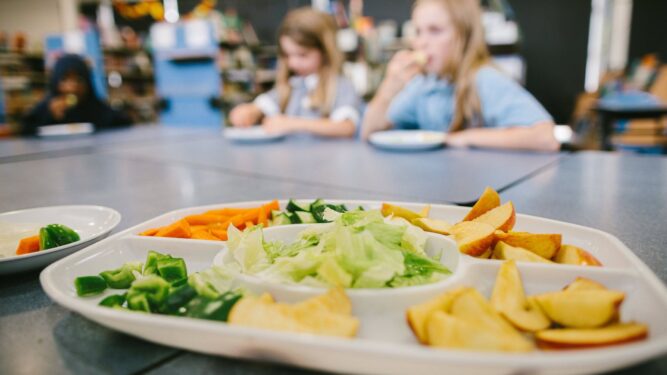Whether you want to encourage your children to eat more healthy foods or you’re concerned about food hygiene, these six tips can help.
-
Eating together as a family
Bringing the family together at least once a day allows you to be a role model for your children, as well as ensuring healthy food is put on the table. The WHO (World Health Organisation) suggests allowing plenty of opportunities to educate your child about COVID-19 and being their form of guidance. If your children are old enough to make their own food choices, this is especially important right now. While they might enjoy junk food in moderation, now’s the time to make sure you’re all eating nutritious foods every single day, and as frequently as possible. Seeing you model this behaviour is important for children of all ages.
-
Stock up on healthy snacks
Have a variety of fruit on hand for snacks and dessert so they become the new ‘normal’ for your household. Other good options include cheese, wholegrain crackers or breads, eggs and nuts, where not allergic, of course. By providing healthy snacking options, you also ensure your children are getting some of the nutrients they need throughout the day, not just during main meal times.
-
Disguise healthy foods
If you’re struggling to get your children to accept some of the healthy options you’d like them to eat, try disguising it. For example, add vegetables to soups or casseroles, mash vegetables into mashed potato or blend veggies in pasta sauces. Australia’s Best Recipes has various examples to try. With the right quantities, they’ll never guess what you’ve added but still benefit from all the extra nutritional value.
-
Involve children in the decision-making process
Plans to improve your family’s healthy eating works even better if everyone’s onboard. Ask your children to help you look at labels or recipes, and talk to them about the ingredients listed, and what they do or don’t contribute to a healthy diet. You could also get them to help you work out what you can substitute if you can’t get everything you want in the supermarket. Getting them excited about picking and eating s is a fun way to involve them as well. This isn’t just beneficial during COVID-19, it’s teaching them important skills for their future.
-
Ask them to help you prepare food safely
The CDC (Centers for Disease Control and Prevention say that coronaviruses are typically spread from person-to-person through the air. They don’t have any evidence to suggest that the virus is transmitting through food, but they still highlight the need to practice good hygiene. Get your children involved in food preparation and explain to them why they need to take certain precautions. In particular, they should wash their hands thoroughly before preparing or eating food. It’s also important to clean the surfaces you’ll be using. Washing and rinsing fruit and vegetables is a critical habit to develop as well.
-
Start with a healthy breakfast
By starting the morning with a healthy breakfast, your family has an even better chance of staying away from unhealthy snacks throughout the day. A healthy breakfast can help with better energy levels and focus, avoiding those energy dips that send us reaching for unhealthy food. You can even choose meals you can prepare the night before or in batches. Good options include boiling an egg for everyone or making scrambled egg sandwiches the night before. You can also defrost frozen fruit overnight, ready to mix with yoghurt and cereals in the morning or for the week ahead, or blend into a smoothie.
Exactly what kind of portion sizes your child needs depends on their level of physical activity.







